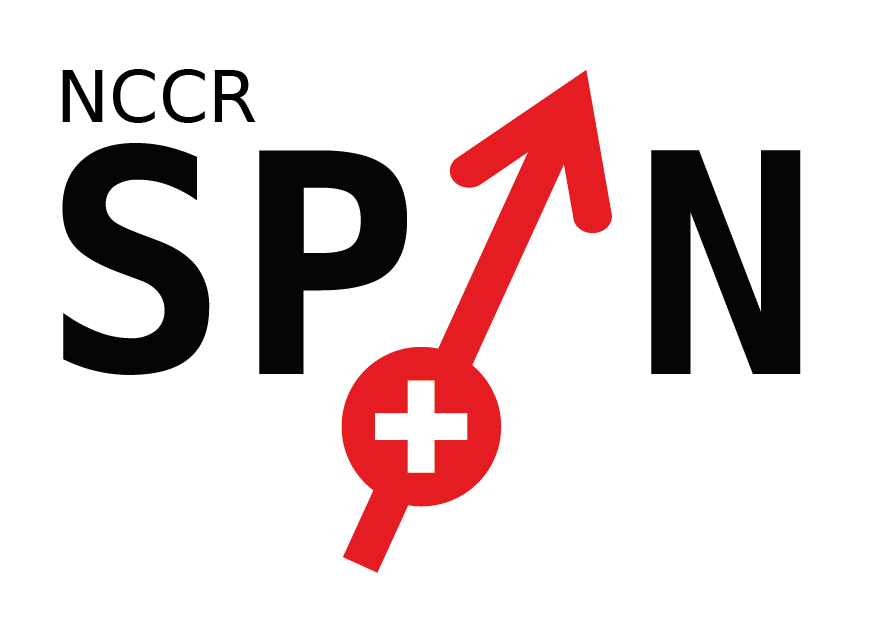“Tinguely Entangled” transforms quantum physics into melodies
Photo: Artists Linda Leimane, Luca Scarzella, Arturs Punte and Lukas Loss preparing “Tinguely Entangled” with scientists Arianna Nigro, Jung-Ching Liu and Rafael Eggli. Credits: MLD, NCCR SPIN and Basel Infinity Festival
In the performance “Tinguely Entangled”, Jean Tinguely’s kinetic sculptures become the backdrop for 5 young quantum physicists and 12 musicians to perform a musical interpretation of the genesis of quantum computers. Navigating into unknown territory, the performance explores new levels of multidisciplinarity to render quantum physics tangible to a broad audience.
The unconventional pairing of artists and physicists in the highly multidisciplinary project “Tinguely Entangled” is ambitious. Imagine: the talented composer Linda Leimane creates for Tinguely Entangled a bespoke musical arrangement in close consultation with some of the world’s leading quantum physicists. The performance is complemented with live interventions of five NCCR SPIN scientists and by visuals developed by artist Luca Scarzella. Designed and coordinated by Lukas Loss, pianist and director of the Basel Infinity music festival, the project requires to coordinate three complementary visions: science, sound, and sight.
But Jung-Ching Liu, Henry Legg, Arianna Nigro, Rafael Eggli and Valerii Kozin are up to the challenge. Guided by Lukas Loss, bridge between scientists and musicians, they slip into a performer’s shoes and convey the complex principles of quantum physics to a lay audience. “When talking with colleagues you use a specific language, that only someone in your field will understand. When faced with such a project one must get rid of this day-to-day jargon and really think about the core concept you are trying to explain.” Henry Legg says. For some of them, it’s also the first time that they get on stage to give an artistic live performance.
Close cooperation with leading scientists enabled the artists to understand quantum concepts sufficiently well to make acoustic and visual sense. “Before we started our work, my collaborator Artūrs Punte and I invested a good amount of time in learning: through conversations with Lukas, Daniel Loss, professor in theoretical physics at the University of Basel, reading, talking to the SPIN scientists, following online courses and attending four live masterclasses.” Linda Leimane emphasises. Luca Scarzella also studied the subject in a way that allows him to develop visual thoughts about it. “I will take advantage of the discussions I will have with the scientists in Basel to remedy any conceptual errors in the visual project.”
“Tinguely Entangled” is proof that art and science, despite often being portrayed as unrelated disciplines, could benefit from a long-term relationship.
Music turned out to be surprisingly suitable for a subject such as quantum computing: “Entanglement – two musicians playing the same tune, superposition – two musicians playing different tunes at the same time, noise, coherence… these are all subjects that we can actually easily imagine transforming into music.” Lukas Loss says. Linda Leimane has proven herself to be the perfect match to compose the music piece: she wrote her graduation thesis on the fractal geometry aspects in the music of Baltic composers. Connections with mathematics, rationality and geometry are also part of her own music.
Science and art both exhibit extremely creative processes and couldn’t exist without experimentation. But their most obvious common ground is their urge to explore unknown territories and push the boundaries of their discipline. Projects such as “Tinguely Entangled” become an opportunity to discover each other’s practices and develop innovative approaches. Science learns to borrow a certain emotionality from art, especially in its communication. “Sometimes natural science can be out of touch with our daily life. Art, however, pursues the resonance with its audience. Through collaborating with artists, I hope the audience realizes that science can be interesting and accessible.” Jung-Ching Liu says. On the other hand, art borrows from science a certain systematicity, a frame, or as Linda Leimane puts it, an “accuracy of proportions and mathematical objectivity, and some sense of order.” Although its primary purpose is frequently technological advancement, science also provides stories and visuals that inspire artists. Linda Leimane is already excited to use newly learned physics phenomena in her next project: “I am intrigued by the idea of sweet spots – a quantum effect that shields an electron from its surrounding noise – and I would like to explore it further. The next project I am invited to is about quantum physics, so I will have the chance to embody this idea on an ambisonic system – a spherical installation consisting of approximately 40 loudspeakers.” Luca Scarzella takes away material from the researcher’s experiments which will become part of his visual archive.
All in all, “Tinguely Entangled” breaks new ground in music and science communication by playing on the strengths of two different but complementary worlds. “We are making something much bigger than one person can do. The process of creation is all about the team, and the energy exchange is exciting!” Linda Leimane highlights.
Leonardo Da Vinci once said “To develop a complete mind: Study the science of art; study the art of science. Learn how to see. Realize that everything connects to everything else.” Come see the result for yourself at the Museum Tinguely in Basel on the 25th of March at 19:30.









